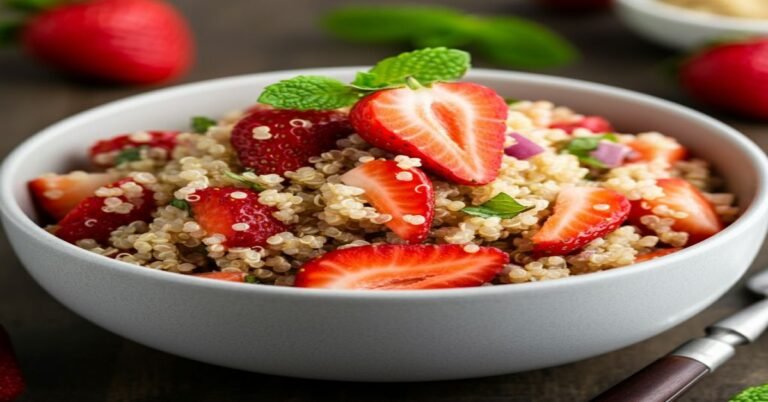Squash Pasta Sauce: Vibrant Healthy Meals
For those who love pasta and eating healthy, get ready to have a new favorite go-to meal. If you go the route of a squash pasta sauce, that’s going to be an amazing replacement—this is coming from several cultures in the world! Great for flavor and health, too, if you need something nutritious but not boring meals. In this post, we will go through the history of squash pasta sauce, its cultural significance, and how you can simply make it from home. We’ll even offer suggestions and recipe ideas for making this sauce a part of your daily diet.
The Squash Pasta Sauce History and Origins
Even though squash is quite trendy now, it has been part of various cuisines ever since we can remember. Squash was grown by the Aztecs and Mayans in Central America. The vegetable was in high regard among these communities for its use and nutrition. Eventually, squash infiltrated European diets and, from there, the world. This could make sense, as it’s appearance in many places, especially pasta sauces, highlights its versatility.
In Italy, for instance, the sweetness and earthiness of squash marry beautifully with pasta. This relationship has inspired thousands of recipes featuring squash as a star ingredient. Nowadays, squash pasta sauce is a high-color, high-flavor food adored by chefs and home cooks alike for its health effects.
Cultural Importance of Squash
From culture to culture, squash has been honored as a diverse and healthy food source. Squash was part of the “Three Sisters”—corn and beans were the other two—that served as the agricultural basis for many Native American communities. Together they form a sustainable farming system and make for a balanced diet.
Currently, squash is the most common thing in vegetarian and vegan food. It is perfect for plant-based recipes, as it takes on flavors and can be cooked in many different ways. Specifically, squash pasta sauce is a delightful means by which we can reap the benefits of this incredible vegetable and honor its historical significance.
Nutritional Benefits of Squash Pasta Sauce
Because squash is a fantastic source of nutrition, squash pasta sauce can be a huge boost for any diet. Squash also has high levels of vitamins A and C, which are important for your immune system and vision. It contains a lot of dietary fiber, which stimulates digestion and helps the intestines to stay healthy.
In addition to these health benefits, squash is a low-calorie and antioxidant-rich food that neutralizes free radicals in the body. These features make it a staple among health-aware consumers looking for aromatic but healthy meals.
One snippet: The health benefits of squash pasta sauce from Dr. Emily Collins, a nutritionist: “Getting in more squash is such an easy way to pack in lots of vitamins and minerals into your meals! If you’re trying to eat more veggies but need something that tastes good, squash pasta sauce is especially tantalizing.
Squash Pasta Sauce: A Flavorful Twist for Pasta, Pizza & More!
This is why squash pasta sauce is so great: it’s versatility. It can be paired with anything from pasta to more adventurous meals.
Use squash pasta sauce for a pizza base instead of tomato sauce. The mild sweetness of the squash is delicious with umami toppings like roasted vegetables, mushrooms, and non-dairy cheeses. Or, mix it to be a dip and serve it with crusty bread or sticks of vegetables for a healthy snack or appetizer.
Food blogger and chef Laura Gates applies this same thinking to squash pasta sauce, which she believes is a recipe that can make an impact. I love it for its depth and complexity in preparation—I use squash pasta sauce. It can go many different ways, so it is a very good choice for the adventurous.”
How to Prepare Squash Pasta Sauce at Home
Making a squash pasta sauce from scratch is easy and very rewarding. Just follow the simple steps below to prepare a batch of this amazing sauce at home:
The first step is to get together all the ingredients you need.
Ingredients for squash pasta sauce
- 2 pounds (approx. 1 kilogram) of squash of your choice (butternut or kabocha squash, pumpkin)
- 4 cloves of garlic, minced
- 1 small onion, diced
- 2 tablespoons of olive oil
- 1 teaspoon of dried oregano
- 1 teaspoon of dried basil
- Salt and pepper to taste
- Optional: Up to a 1/4 cup of vegetable broth (for taste)

Step 2: Roast the Squash
Step 1: Preheat your oven to 400 degrees Fahrenheit (200 degrees Celsius). Halve the squash, scoop out the seeds, and place the cut side down on a baking sheet. Roast for 45 minutes to 1 hour, or until flesh is tender and fork-tender. Let it cool down, then scoop out the flesh and keep it aside.
Step 3: Saute the Onions and Garlic
Heat olive oil over medium-high heat in a large saucepan. Stir in the minced garlic and chopped onion, and cook until the onion is tender and transparent but not browned, about 5 minutes.
Step 4: Combine Everything And Simmer
Transfer the flesh of the roasted squash to the saucepan and add in all the dried oregano, dried basil, salt, and pepper. Add the vegetable broth if using. Mix properly and simmer for 5-10 minutes to combine flavors.
Step 5: Blend the Sauce
Blend using an immersion blender/food processor till smooth. You may have to add some water or more vegetable broth if the sauce is too thick until the desired consistency. Taste and adjust the seasoning as necessary. Your sauce is now ready to use in recipes or jarred and preserved for later!
Nutrition And Benefits For Vegetarians and Vegans
This squash pasta sauce makes a great choice for vegetarians and vegans as it provides nutrients and flavors from all plant-based sources. Squash is high in vitamins and provides a great option for traditional pasta sauces for health and wellness.
Enhance your culinary experience with butternut squash sauce. A versatile side dish, it’s sweet, nutty flavor complements various meals impeccably. Professionally prepared, this sauce is simple yet sophisticated, adding a delightful twist to your dining moments.
Fiber content is high in it naturally and also balances out a healthy diet while aiding digestion and keeping people full. Within these meals, when utilizing squash pasta sauce, you will be able to have the most effective, nutritious, and flavorful choice of meal for your preferences.

Squash Pasta Sauce Recipe Ideas And Alternate Modes
Squash pasta sauce can be used in numerous ways in your cooking. Here are some ideas to help you.
- Squash Alfredo Silkiness: Blend the squash pasta sauce with some creamy plant milk or pine nuts and some nutritional yeast for an instant, dairy-free silky Alfredo. Serve over your favorite pasta and top with mushrooms and spinach (sautéed).
- Squash and sage risotto—Use a squash pasta sauce as the base for a nice risotto. Add arborio rice, vegetable broth, and fresh sage to the pot and cook until the rice is fluffy and creamy. Top with a little sprinkle of vegan Parmesan at the bottom.
- Curried Chilli Pasta Sauce: Just spray the hell out of your squash pasta sauce with curry powder, ginger, and chili flakes. Great over rice or quinoa for a filling, warming dish.
Sarah Thompson is a home cook and recipe developer focused on plant-based recipes—she uses squash pasta sauce in her cooking. I discovered that squash pasta sauce is an easy way to add flavor while getting my family to eat some veggies, and it makes whipping up a comforting, delicious meal just minutes away.
How to Store Squash Pasta Sauce
For some helpful tips on how to store your squash pasta sauce and keep it fresh and tasty, see below:
- Fridge: It will last 5 days in an airtight container within the fridge.
- Freezer: The sauce will be kept in portion-sized containers for three months. If you decide to use it, thaw it in the fridge overnight.
With a little bit of work with your squash pasta sauce, you can have an easy, healthy meal ready for those busy weeknights.
Final Thoughts
This squash pasta sauce is a fantastic focus, packed with nutrition and flavor that every home cook needs in their arsenal. Its intriguing history, cultural aspects, and health advantages make this the authentic sauce that fits right in with anyone wanting to try something new and still keep their diet healthy.
Make it yourself at home, and you will realize that the options with squash pasta sauce are pretty much endless. Spread the word and share your experience + recipe with loved ones, and become a part of the continued effort to show others how great health can be. Magic squash pasta sauce!
If you want some more healthy recipe ideas or the latest food trends, subscribe to our newsletter here. Make sure you remember to share this post on social media so more people can know how healthy the squash pasta sauce is and try it out!
Frequently Asked Questions
Can I make this recipe with other kinds of squash?
Yes, you can use any other sort of squash—butternut, kabocha, acorn, or even pumpkin! All the varieties will give their different taste and texture to the sauce, so try and go with what you love.
How do I make the sauce more creamy?
You can also add plant creams to this for a creamier texture (coconut, cashew). Otherwise, you can use soaked and blended cashew nuts for a creamy texture.
How do you make the sauce hotter?
Certainly! For extra heat, throw some chili flakes, cayenne, or jalapeño into the mix while you sauté. Modify the number to taste how spicy you want it.
What other herbs or spices can I use for this sauce?
You could also add thyme, rosemary, or sage to your pizza for deeper flavor aside from oregano and basil. Nutmeg also adds to the warming aspects of squash; add a dash. Try out this idea with whatever herbs and spices you like and come up with your flavor.








